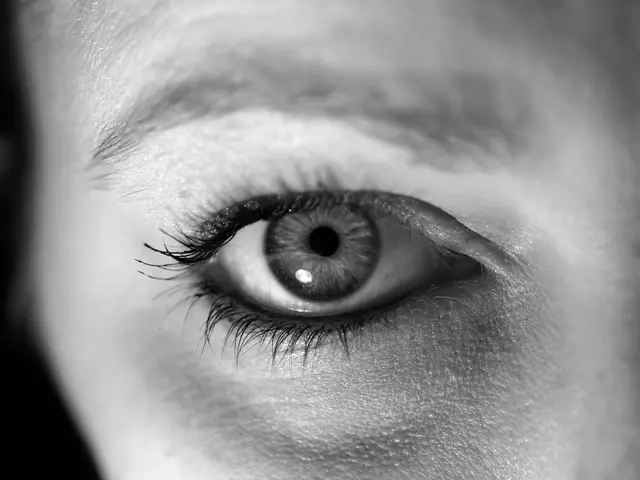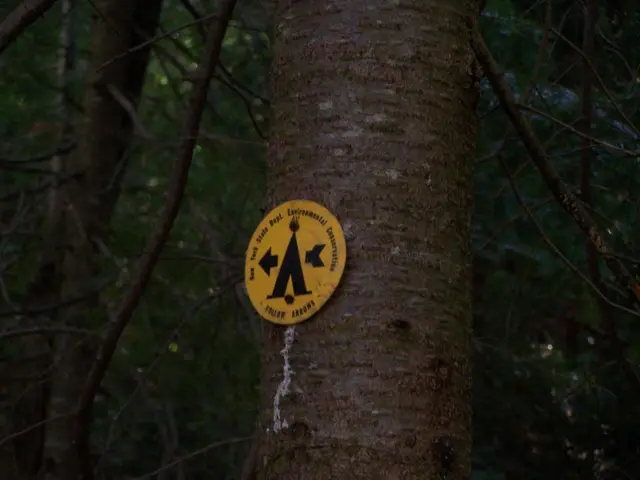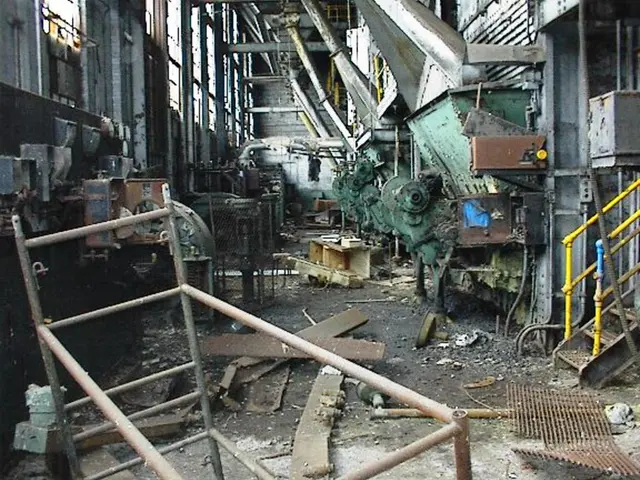Memories Stirred: Understanding the Emotional Response to Past Images
Awe-inspiring, ain't it? The power old snaps have over us, making us all sentimental fools as we reminisce about times long gone. But why do these frigging pictures get us so worked up? Why do we find ourselves back in the past, reliving moments that we thought we'd forgotten? The answer lies deeper than just simple nostalgia - it's embedded in our biology and psychology.
Old photos do more than just remind us of good times; they tug at our heartstrings and whisk us away to another era. However, it's not just that we're feeling wistful - it's a phenomenon that touches on our memories, emotions, and the very essence of what photos represent: a direct link to a piece of time that'll never come back.
What's the Big Deal with Nostalgia, Anyway?
When you're eyeballing an old photo and the feels start rollin' in, you're likely experiencing nostalgia. Nostalgia is a complex emotional experience that involves missing something from the past with a hint of melancholy. But nostalgia is more than just missing something; it's a way of emotionally connecting to our history, of anchoring ourselves to moments that help shape who we are now.
Nostalgia 101: The Psychological Side
Research has shown that nostalgia is a crucial psychological resource. It's not just a wave of sadness; it's a coping mechanism that can boost our mood, reduce feelings of loneliness, and even strengthen our social connections. According to a study, when we indulge in nostalgic thoughts, we not only feel more emotionally connected to our loved ones but also experience feelings of belonging, warmth, and positivity.
Want to Read More? Check out "How Marketing Manipulates Memory: The Science Behind Unforgettable Ads."
You Might Also Like
- "The Mystery of People Who Never Sleep - And How It Affects Them"
- "Can You Get Away With a Crime Using the 'Sleepwalking Defense'?"
- "Parallel Lives of Everyday Objects: The Secret Histories of Things We Overlook"
- "How Does Color Affect Your Mood Without You Realizing It?"
What's Going on in our Brains when we look at Old Photos?
The emotional impact of old photos is a result of some elaborate neurological fireworks. Our noggins have the uncanny ability to connect photos to memories in a way that often leaves us surprised. Let's break it down:
- Memory Activation: When you're staring at a photo, your brain's hippocampus kicks into gear. This allows your brain to replay the moment frozen in the image, retrieving specific details that have likely faded with time.
- Emotional Response: At the same time, your brain's amyggdale hops into the action. This leads to an emotional response based on the memories tied to the photo, causing us to feel joy, melancholy, pride, or any number of other emotions.
Why Photos Trigger Emotional Memories
There's a reason why photos are so emotionally powerful. Research has revealed that visual memories are often more vivid and emotionally charged compared to memories recalled through other means. This is because photos provide a concrete anchor for memories, making them more immersive and impactful.
As Dr. Linda Henkel, a psychologist, explains, "Images provide a specific anchor for memories, making them more vivid than memories recalled solely through thought." In other words, photos give us a way to relive an experience, almost like it's happening in the moment.
For More Info: "Why Do We Find Things Cuter When They're Smaller?
The Role of Storytelling in Our Lives
Another crucial factor in why old photographs are so emotionally charged is the stories they tell. Every photo is more than just a simple image; it's a piece of a larger narrative, a slice of time that comes with layers of meaning. Humans are wired for stories, so when we view photographs, our brains automatically weave them into a narrative that provides us with context and meaning.
Photos remind us of the larger story of our lives, of the experiences that have shaped us. It's not just about remembering the moment captured in the photo; it's about the events before and after it. For instance, a photo of a birthday party isn't just about the cake and laughter - it connects us to the bigger story of that year in our lives, the people we were close with, and the experiences that changed us.
Pro Tip: Next time you flick through your old photo album, take a moment to tell the story behind each photo. Share your memories with a loved one or use it as a means of self-reflection. It might help you forge new emotional connections and gain fresh insights.
Practical Benefits of Reconnecting with Old Photos
Beyond the immediate emotional reaction, taking a trip down memory lane can have a positive impact on our mental and emotional well-being. Here's how:
- Strengthening Family and Social Bonds: Family photos, when shared with loved ones, can serve as powerful connection tools. They give us a chance to reconnect with our family history, learn about our ancestors, and strengthen our links to the people we love.
- Self-Reflection and Personal Growth: Looking at old photos can also be a reflection of our personal growth. It reminds us of the challenges we've conquered, the milestones we've reached, and how far we've come. It gives us a visual diary of our life's journey and helps us see how much we've evolved.
- Boosting Creativity: Photos can also inspire artists, writers, and other creatives. They can spark ideas for paintings, stories, or other forms of artistic expression.
- Mindfulness and Grounding: The simple act of focusing on an old photo can serve as a form of mindfulness. It pulls us out of the stresses of everyday life and helps us be present in the moment.
For Further Reading: "Why Do People Collect Weird Things? The Psychology of Unusual Hobbies"
How to Leverage Old Photos for Mental and Emotional Well-being
If you find yourself feeling bummed out when staring at an old photo, don't worry - it's a common occurrence. Photos have the power to evoke a range of feelings, including the not-so-great ones. Here's how to ensure that the experience remains positive:
- Edit Your Collection: Sometimes, the sheer number of photos can overwhelm. Curate your collection by keeping the ones that resonate with you and ditching the ones that evoke negative emotions. You can always revisit them later when you're in a better frame of mind.
- Share Your Photos: Sharing your photos with friends and family can make the experience more meaningful. It gives you a chance to discuss the stories behind the photos, deepening the emotional impact.
- Create a Memory Book: Making a scrapbook or digital album can help you organize your memories in a meaningful way. The process of creating the book can give you a sense of control over your past and foster a deeper emotional connection.
- Use Photos for Journaling: If you enjoy writing, consider using photos as prompts for journaling. Write down the stories behind the photos, your feelings at the time, and your reactions in the present.
Wrapping Things Up: A Vault of Memories
Old photos are more than just cute reminders of the past; they're emotional time capsules that have the power to make us feel deeply, connect more emotionally, and help us remember the richness of our lives. Each photo is a thread in the tapestry of our personal histories, and revisiting them can help us reconnect with who we once were and who we've become.
The next time you take a gander at an old photo, take a moment to appreciate the journey it represents. You're holding a piece of your past, a moment captured in time that still carries weight in the present. Make the most of these emotional touchstones, and use them to enrich your present and future.
Keen on reading more about the psychology of memories and emotions? Drop by our Knows360 for a deeper dive into the intricacies of the human mind and heart.
Photos aren't just a visual record of history; they evoke strong emotional responses that impact our mental health. The science behind this lies in the complex interplay between our biology, psychology, and memory.
Nostalgia, triggered by old photos, is a powerful psychological resource that boosts mood, reduces feelings of loneliness, and strengthens social connections. This emotional connection to the past can also provide a sense of identity and self-awareness.
In terms of mental health, focusing on old photos can serve as a form of mindfulness, helping individuals stay present and refreshed. Engaging in storytelling about these photos with loved ones can deepen emotional connections and promote personal growth.
On the other hand, it's essential to manage one's photo collection appropriately, eliminating pictures that evoke negative emotions and sharing photos with loved ones to enhance their emotional impact. Creating a memory book or using photos as journaling prompts can further facilitate introspection and emotional growth.
By appreciating the emotional weight that old photos carry, individuals can leverage their power for self-discovery, connection, and mental well-being. Moreover, delving into the science of memory and emotions can offer valuable insights into the inner workings of the mind and heart.








